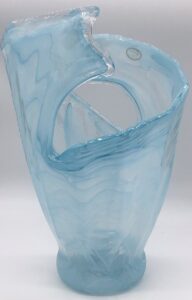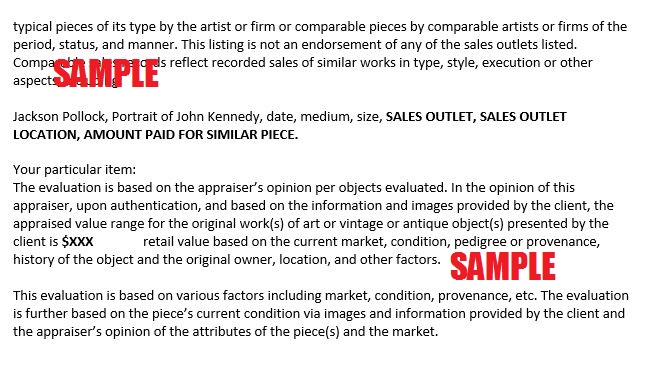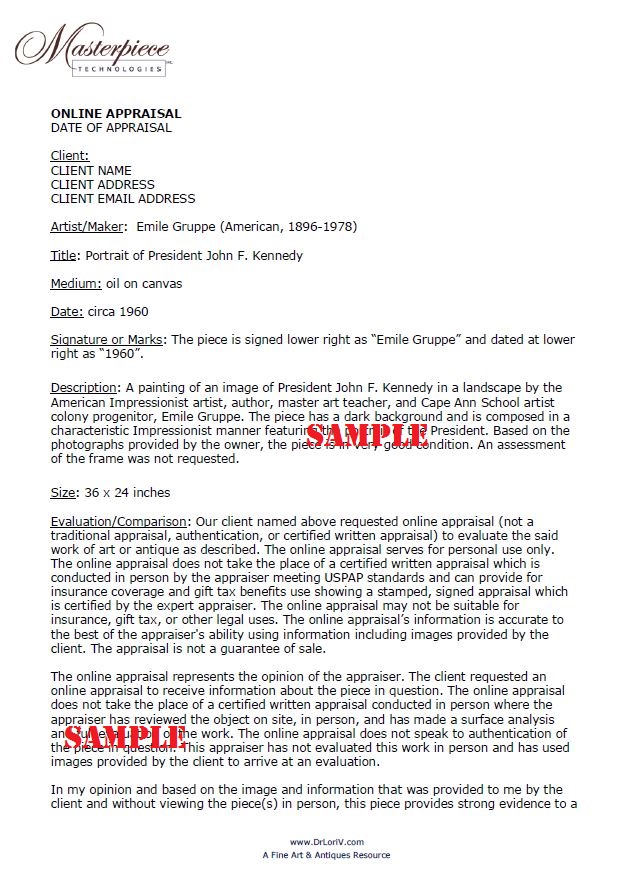
by Dr. Lori Verderame
Many, many, many of you have asked me to write this article on valuable Murano glass from Venice, Italy. It is such a popular, pretty, and pricey type of glass that many collectors prefer it to the glass or crystal made by such prestigious glass firms as Lalique, Steuben, Compagnie de Saint Gobain SA, Kosta Boda, etc. Murano is not crystal, make no mistake. It does not have lead content, Murano pieces are glass objects. Murano is known for its organic forms, figural and abstract designs, and for its amazing colors made from the manipulation of blown glass rods. Most people love the romantic association of Murano glass. People love the gentle forms, beautiful colors, various organic shapes, and artistry that has become synonymous with the centuries old glass making center of Murano of Venice, Italy.
Murano’s Beginnings

In the shadow of the famous sites of Venice, Italy such as the Doges Palace, St. Mark’s Square and Cathedral, the Bridge of Sighs, and the Grand Canal and its smaller canals, the island of Murano has been home to glass makers and skilled artisans since the time of the ancient Romans. And when it comes to learning about Murano glass and its history, remember that it is all about this place, this center for glass making that will tell the story of valuable glass objects. Venice with its water taxis and gondolas as well as the more than 115 islands that comprise the historic area is uniquely connected to the tradition of making glass.
Murano glass references the place where it is made. Murano is not a specific manufacturer or glass-making firm. The island of Murano and the surrounding islands of the famous city of Venice, a city dedicated to St. Mark, has been home to glass makers for a very long time. The glass furnaces of Murano have been in operation, not far from St. Mark’s Square in the canal city of Venice and its 117 surrounding islands, since the 1200s AD. Murano glass is made by hand and the methods for making Murano glass have been handed down from artisan to artisan over time.
Remember that true Murano glass can only be made in Venice, Italy. These pieces of Murano glass are only authentic if the well known art glass blowing techniques are used to make the pieces of glass. Pieces of Murano glass must be made in Murano, but they also must be made from materials that are local to the area. When making glass pieces, the sand in Murano is desirable and has an impact on the success of the final product.
What to Look For

Special features like rich colors and varied shapes are just some of the things to look for when it comes to determining if you have a piece of authentic Murano glass. There are many who copy Murano glass for its designs, colors, and styles. When you are looking for Murano glass pieces, look for an abundance of rich colors, natural imperfections, imperfect shapes, variations of shapes, gold specks, silver flecks, various color shades, signatures, famous designers, and Murano labels. There are no exact measurements used when it comes to making blown Murano glass pieces. This is part of the beauty of each piece. Machines do not aide in the making of valuable Murano glass pieces. Some pieces are irregularly shaped, some are slightly asymmetrical, some have rough or smooth pontils making identifying an authentic piece of Murano difficult. As a result, this manual process which dates back centuries highlights hand craftsmanship and dealing with the results that come out of the glass and the fires of the glass furnaces. Shapes, sizes, and shades of color all differ from piece to piece. Some art glass artisans try to control the glass while others embrace the free forms of the glass making process.
How to Make Murano
A piece of blown Murano art glass starts with what is called glass mass. A glass mass is the starting point for making every art glass object. To give this glass mass its color, the mass must be heated. Once the glass is ready to be colored, various minerals are added to the glass to give it a specific color. I discuss the various glass colors and the minerals that make color them on my videos and in my articles. When the glass mass is heated with a certain mineral, the mineral melts into the piece of clear glass. Then, that clear piece of glass takes on the intended color like red which derives from introducing gold into a piece of glass during the glass blowing process. Blue glass comes from introducing cobalt and pink glass results from heating glass with manganese. These are just a few examples of the minerals and colors that result in the glass making process. In Murano, an innovative color layering method called “Sommerso” is used to highly decorate pieces of Murano blown glass. Some glass pieces are made using multi-colored glass rods to create a mosaic type of effect in blown glass known as “Millefiori”. Millefiori is a glass blowing technique which was first introduced in ancient times. And, finally, the term “Murrina” is the name for the process of various glass coming together with many colors while blowing.
Signatures, Marks and Labels

Let the famous signatures and identifying labels found on pieces of Murano blown glass help you to find a valuable, authentic piece of Murano glass. Most pieces of blown glass made in Murano have workshop names on their adhesive or paper labels that are attached or adhered to each glass piece. Sometimes, a piece of Murano glass will be signed. These Murano glass pieces will have an etched signature of the glass artisan’s name or the glass master’s name or another type of marking on the piece. Often, there is some type of notice indicating that the piece of blown glass was made in Murano and not elsewhere. Some pieces come with specific information about the Murano-based glass maker who made a particular piece of glass or designed the piece in question. This is extremely important when identifying a piece of Murano glass for value. Master glassblowers working in Murano typically sign their work. Murano blown art glass that is sold online or in stores aren’t cheap by any stretch of the imagination. Look for quality and be ready to pay the price for these quality pieces.
Don’t be fooled by Murano fakes and remember, there are many Murano fakes out there. For instance, there are many pieces of glass upon which labels are placed which indicate that a piece of blown glass was made in the manner of the Murano masters, but not by a Murano master or not in Murano proper. The Italian phrase found on a label upon a piece of blown glass which reads as “Vetro Eseguito Secondo La Tecnica Dei Maestri Di Murano” means that the piece of glass was not made in Murano. In fact, that phrase means that the piece of blown glass, which looks like Murano glass, was created in the same manner or using the same techniques as that of the Murano glass blowing masters but it is NOT a piece of authentic Murano glass. This labeling or the notification of the phrase “Vetro Eseguito Secondo La Tecnica Dei Maestri Di Murano”is required to protect the longstanding work and the master craftsmanship of the Murano glassmakers.
Protect yourself by purchasing a piece of Murano glass that has the authentic markings of the Murano Glass Consortium. Those are the pieces of authentic glass right from Murano. If you find a piece of glass with a factory name on a label, then be sure that factory is located in Venice or on the island of Murano because if it is located elsewhere, then you do not have a piece of Murano art glass. For a piece to be Murano glass, it must be made in Murano. Plain and simple!
Characteristic Murano subjects relate to life in Venice such as images of bridges, gondolas, animals, figures, lovers, etc. Murano designs often reference Italian art history and images from famous Renaissance paintings like the Venus of Urbino by Titian, the great Venetian master or Primavera by Botticelli or Leonardo da Vinci’s Last Supper. Objects like bowls, dishes, jewelry pendants, beaded necklaces, plates, and vases are only some of the objects that the Murano artisans produce. In addition to such objects lighting fixtures, lamps and chandeliers from Murano are highly sought after items on the international market.
How to Spot a Fake
It is vital to the value of your piece of art glass to spot a fake if you are trying to collect authentic vintage and new Murano glass. To protect the Murano artisans and to be sure that the market recognizes authentic pieces of art glass from Murano, a consortium was established in the late 20th century. The Consortium of Murano Glass Companies was established in Venice, Italy in 1985. Overseeing the production of glass items that bear the Murano name, the Consortium of Murano Glass Companies requires that every member company that makes art glass under the Murano name is based on the island of Murano which is not far from Venice’s famous Grand Canal. The Consortium will not allow any of its member companies to be making glass items anywhere other than in Venice. Even glass makers within other parts of Italy are not included in the Consortium of Murano Glass Companies. While other artisans can make look-alike glass pieces in the Murano style, if a piece was not made in Murano then it cannot bear the Murano name or label. The Consortium of Murano Glass Companies are very strict about the rule that a member glass making company must be located in Murano.
The creative talent, technical prowess, and consistent quality of these art glass items make Murano glass a household name of high quality. Murano Glass masters use glass-blowing techniques, specialty molds, and small flames, just as the Romans used centuries ago, to make glass blowing a major art form in Murano. Murano has also been a site for new innovations in the glass blowing process. What makes Murano great? Artistic designs, rich colors, lightness of form, and quality materials to name a few. When seeking out authentic designs of Murano glass, the important designers and art glass artisans to know include: Fratelli Toso, The Salviati Family, Umberto Bellotto, Ercole Barovier, Paolo Venini, Carlo Scarpa, Alfredo Barbini, and Tobia Scarpa to name a few.
Valuable Murano
When it comes to valuing Murano art glass pieces, the type of art glass object impacts the value as does the coloration, design, and execution of the piece. Some of the most popular items of Murano glass are jewelry pieces– earrings, beaded necklaces, pendants, bracelets, etc. Murano glass jewelry pieces are made using a small gas flame. Jewelry pieces are made from pre-made glass canes in a technique called lampwork or “a lume” in Italian. Mosaic designs consisting of rods are used to make the famous Millefiori objects. Lattimo pieces feature opaque glass of a milky white color in design and have been popular since the Roman times. Glass pieces featuring repeating or controlled bubble patterns are called Bullicante pieces. Recognizing these and other art blowing techniques are vital to identifying an authentic and valuable piece of Murano glass.
When identifying a piece of authentic Murano glass, you will find that no two pieces are alike. Ever! While similarities exist in the world of Murano art glassmaking, it is rare for two pieces to be identical based on the fact that more than one artisan is making each piece and the conditions of the glass blowing furnaces and properties of the materials.
Watch videos on my YouTube channel where I reveal more about Murano glass and its value. I can appraise your valuable Murano glass from photos or you can show me your pieces during a video call.


